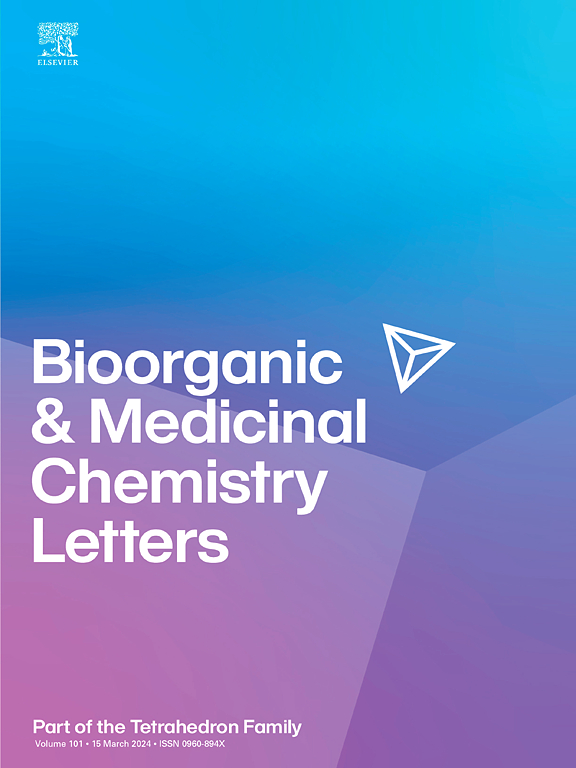Design, synthesis, and biological evaluation of naphthoaurones against colon cancer cells
IF 2.2
4区 医学
Q3 CHEMISTRY, MEDICINAL
引用次数: 0
Abstract
To identify compounds with potent inhibitory effects on HCT116 colon cancer cells, naphthoaurone compounds were designed and synthesized. A clonogenic survival assay was performed for the 16 synthesized compounds as an initial investigation, and compound 8 was selected based on its half-maximal HCT116 colon cancer cell growth inhibitory effect (1.11 μM). Further biological experiments for compound 8 demonstrated a significant decrease in the survival rate of HCT116 cells at the dose exceeded 10 μM, reaching an effective dose for a 50 % reduction in viability (ED50) of 24.62 μM. Cell cycle analysis revealed that the sub-G1 cell population, a common feature of cells undergoing apoptosis, increased with a decrease in the G1 phase and an increase in G2/M phase cells after exposure to compound 8. Moreover, over time, compound 8 activated caspase-2, caspase-9, and caspase-3 via proteolytic cleavage. These results indicated that compound 8 triggered apoptotic cell death in HCT116 colon cancer cells by activating caspase-mediated apoptosis. In conclusion, a novel naphthoaurone derivative, (Z)-6-methoxy-2-((2-methoxynaphthalen-1-yl)methylene)benzofuran-3(2H)-one), shows potential for use in colon cancer therapy.

萘环酮抗结肠癌细胞的设计、合成及生物学评价。
为了鉴定对HCT116结肠癌细胞有抑制作用的化合物,设计并合成了萘醌类化合物。对合成的16个化合物进行克隆生存实验作为初步研究,根据其半最大HCT116结肠癌细胞生长抑制作用(1.11 μM)选择化合物8。进一步的生物学实验表明,当剂量超过10 μM时,化合物8显著降低HCT116细胞的存活率,达到有效剂量,使活力(ED50)降低50% %(24.62 μM)。细胞周期分析显示,暴露于化合物8后,亚G1期细胞数量增加,G1期细胞减少,G2/M期细胞增加,这是细胞凋亡的共同特征。此外,随着时间的推移,化合物8通过蛋白水解裂解激活了caspase-2、caspase-9和caspase-3。这些结果表明,化合物8通过激活caspase介导的凋亡,引发HCT116结肠癌细胞凋亡。总之,一种新型萘环酮衍生物(Z)-6-甲氧基-2-((2-甲氧基萘-1-基)亚甲基)苯并呋喃-3(2H)- 1)在结肠癌治疗中具有潜在的应用价值。
本文章由计算机程序翻译,如有差异,请以英文原文为准。
求助全文
约1分钟内获得全文
求助全文
来源期刊
CiteScore
5.70
自引率
3.70%
发文量
463
审稿时长
27 days
期刊介绍:
Bioorganic & Medicinal Chemistry Letters presents preliminary experimental or theoretical research results of outstanding significance and timeliness on all aspects of science at the interface of chemistry and biology and on major advances in drug design and development. The journal publishes articles in the form of communications reporting experimental or theoretical results of special interest, and strives to provide maximum dissemination to a large, international audience.

 求助内容:
求助内容: 应助结果提醒方式:
应助结果提醒方式:


